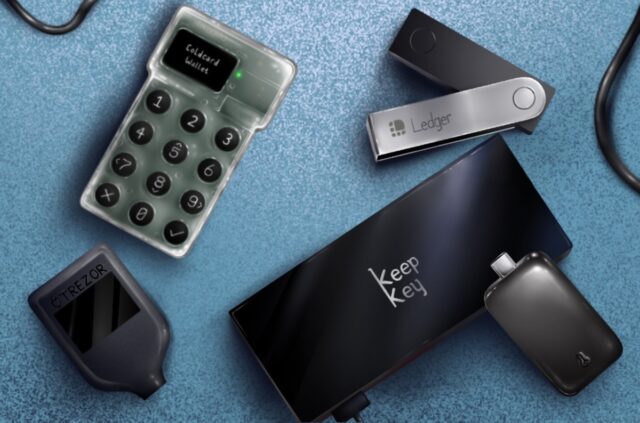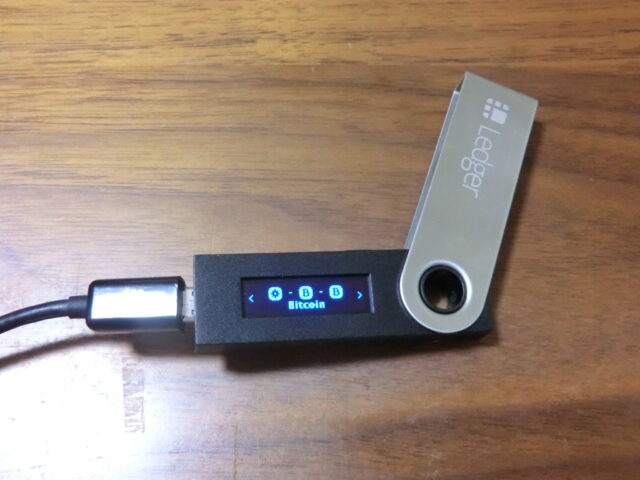
When it comes to cryptocurrency, good storage is of paramount importance. The crypto world is dangerous – malicious actors are everywhere and have abundant strategies to steal users’ funds. Establishing a plan for protecting your coins should be your utmost priority.
You have various storage options, each with its security and usability trade-offs.
Most likely, newcomers will stick to exchanges. These platforms provide many with their first exposure to cryptocurrency and allow users to store their funds in an online wallet. But the user is not technically in control of their coins. If the exchange is hacked or taken offline, they may not be able to recover their funds.
Users might not see a need to move their cryptocurrency off of the exchange. They may lack the skills to do so or even view custodial solutions as more secure. After all, self-custody can result in loss of funds if the user makes a mistake.
The thought of taking control of your cryptocurrency yourself may be daunting. But from a security perspective, hardware wallets are unmatched. This article will explain what they are, how they work, and why you should use them.
What Is A Hardware Wallet?

Hardware wallets are devices specially designed to store private keys securely. They’re considered safer than desktop or smartphone wallets because they don’t connect to the Internet at any point. These properties significantly reduce the attack vectors available to malicious parties, as they can’t tamper with the device remotely.
A good hardware wallet ensures that private keys never leave the device. They’re usually held in a special place in the machine that doesn’t allow them to be removed.
Since hardware wallets are always offline, they must be used alongside another machine. Because of how they’re built, they can be plugged into infected PCs or smartphones without any risk of leaking the private key. From there, they interact with software that allows users to view their balance or make a transaction.
Once the user creates a transaction, they send it to the hardware wallet. Note that the transaction is still incomplete: it needs to be signed by the private key in the device. Users confirm that the amount and address are correct when prompted on the hardware device. It is signed and sent back to the software, which broadcasts it to the cryptocurrency’s network.
Why Should You Use A Hardware Wallet?

Wallets that store private keys on internet-connected computers or smartphones leave users’ funds vulnerable to a wide range of attacks. Malware can detect crypto-related activity on these devices and drain the users’ funds.
A hardware wallet is like an impenetrable vault with a small slot. When users want to create a transaction that the network will accept, they push it through the slot. Imagine that an elf performs some cryptographic magic that signs the transaction on the other side of the slot. The elf will never leave the vault – there’s no door, and it can’t fit through the slot. All it can do is receive the transactions and push them back out.
Even if someone manages to get ahold of your hardware wallet, you’ll have additional protection in the form of a PIN code. Devices will often reset if the incorrect combination is entered several times.
Funds that aren’t actively being used – those that aren’t being spent, staked, lent, or traded – should be kept in cold storage. A hardware wallet provides a convenient means of achieving this for users, even those with limited technical knowledge.
Hardware wallets must be backed up in case of loss, theft, or destruction. When initializing, the user will often be prompted to record their seed phrase – a list of words that can be used to recover funds on a new device. This allows anyone to spend their coins, so it should be treated as any valuable would. It’s recommended that users write these down on paper (or etch them into metal) and keep them in a private and safe location.
If you are unable to make the comparison between Trezor Model T vs. Trezor One while choosing a hardware wallet, you will get to know the differences via this website, and you will be able to select the right one.
Limitations Of Hardware Wallets

Like other forms of storage, hardware wallets come with their trade-offs. While they’re one of the most secure mediums for holding coins, there are still some limitations. They strike a balance between security and usability. Smartphone/software wallets are convenient, whereas hardware wallets can be cumbersome to operate (given that two devices must be used to send funds).
Still, hardware wallets are not entirely foolproof. A physical threat against a user might compel the attacker to unlock a wallet, but there are also other vectors. Skilled malicious parties may be able to exploit the device if they gain physical access.
However, no successful hack has retrieved the private keys from a hardware device in a real-world scenario. When vulnerabilities are reported, manufacturers are generally quick to patch them. That’s not to say they’re impossible – researchers have demonstrated attacks against even the most popular wallets.
Supply chain attacks can also be effective in undermining the security of a hardware wallet device. These occur when the lousy actor acquires a wallet before it’s delivered to the user. From there, they can tamper with it to weaken security and steal funds after the user has deposited coins.
Another limitation is that hardware wallets involve taking custody into your own hands. Many consider this an advantage as no third party is responsible for managing your funds. But this also means that if anything goes wrong, there is no recourse.
Bottom Line
The limitations of hardware wallets don’t outweigh their advantages. As storage solutions go, it isn’t easy to match the security of hardware wallets with other methods. There’s no substitute for cold storage, which eliminates many risks from the self-custody of funds.
Users should educate themselves on the range of options available when seeking a hardware wallet. Several devices are on the market, each with its features, supported cryptocurrencies, and a learning curve.









